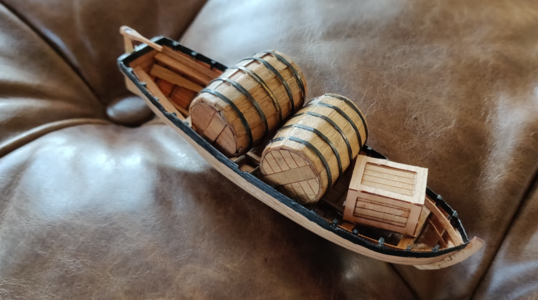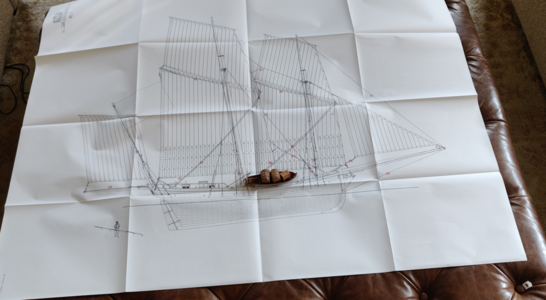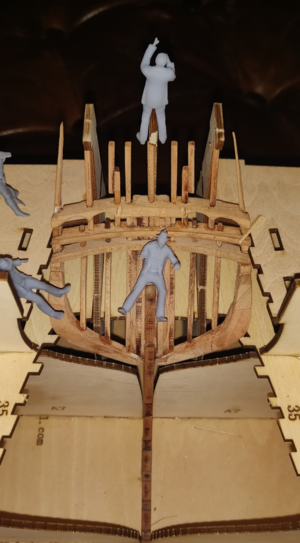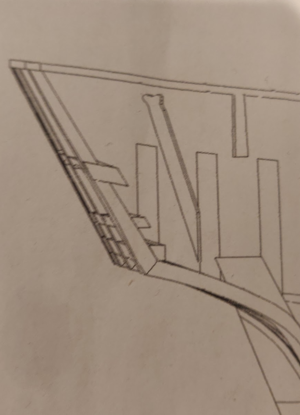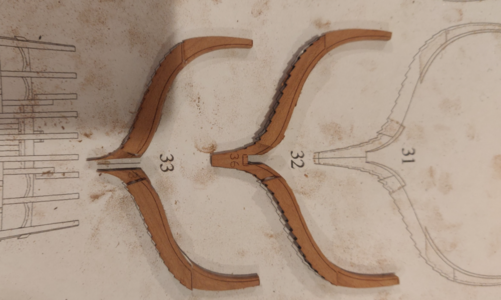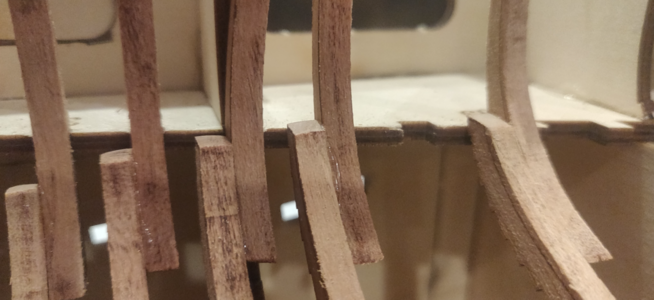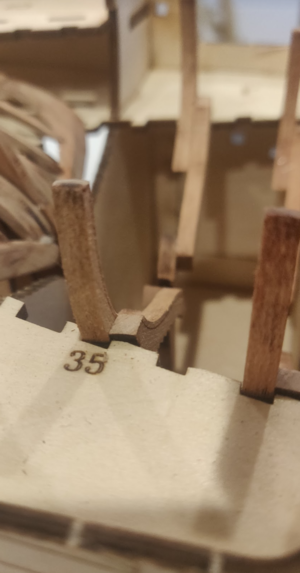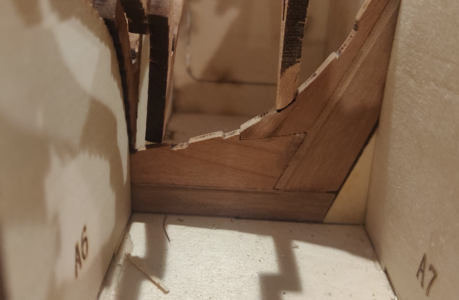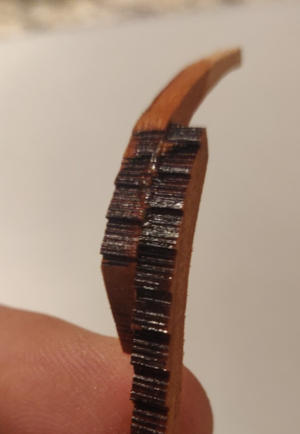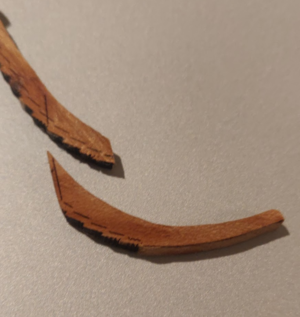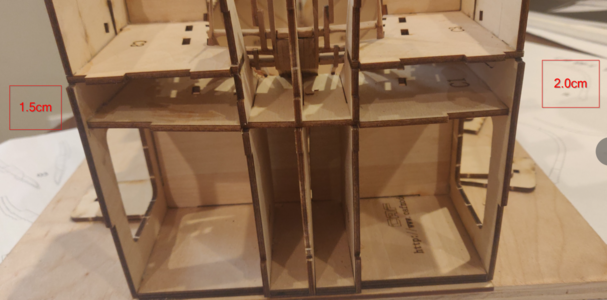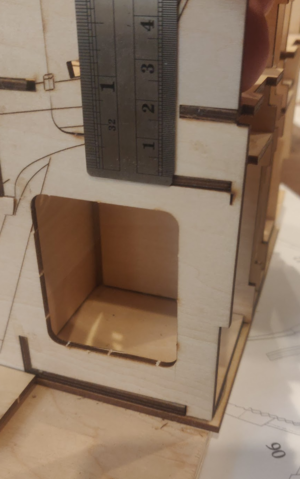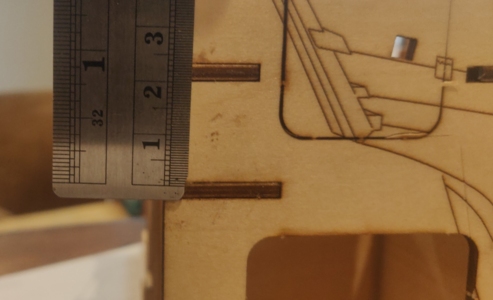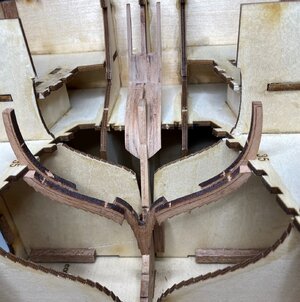Hi everyone,
I received my CAF model recently and like others, was missing E1/E2. Seeing as I had to wait for these to arrive as well as the Ancre monograph, I thought I would start with the smaller boat, some barrels and creates from the associated kits. At the very least, I hoped to get a little bit of familiarity with the CAF pieces.
First impressions - the frames for the boat are very fragile! #2 broke in half while sanding. I thought that the jig would help to reposition this properly but it ended up going down too low on the keel. No way to tell this while it's in the jig.
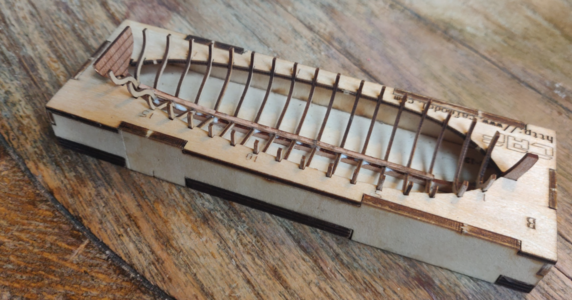
The tolerances are very tight. While trying to pop the completed frame out of the jig, two of the frames broke. Lesson for other builders - use some snips and carefully cut the jig away in pieces.
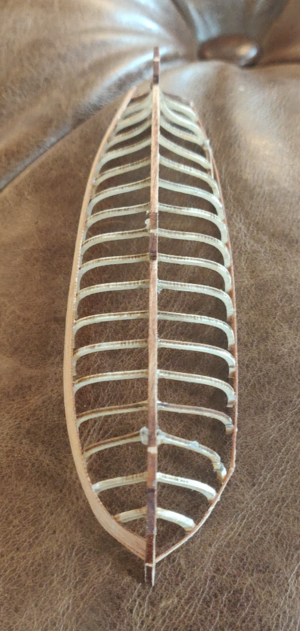
Another problem is that the instructions are really quite minimal. There's no indication of where to play the top plank on the frames. I didn't have the Ancre monograph either at this point so I just guessed. I got lucky and it ended up pretty close, but I ended up with a small (.5mm) gap between the keel and the garboard strake.
Another tip - I would gently sand the char off the frames prior to assembly. It's just too difficult once things have been glued in place.
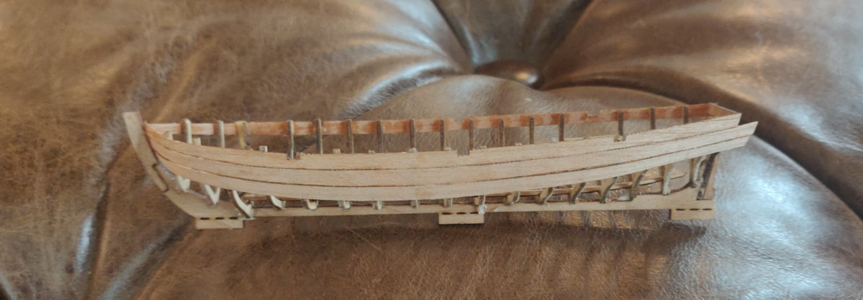
The planks come pre-splined, which is pretty awesome. However... there are microdots on the edges which are nearly impossible to sand down due to the fragility of the planks. This wasn't evident to me until I had gotten a few done. I did my best but ended up with these tiny dots which could be seen when the boat is held up in front of a light.
Nevertheless, I was really pleased with the fact that there were almost no clinkers or gaps on the planks. Well done.
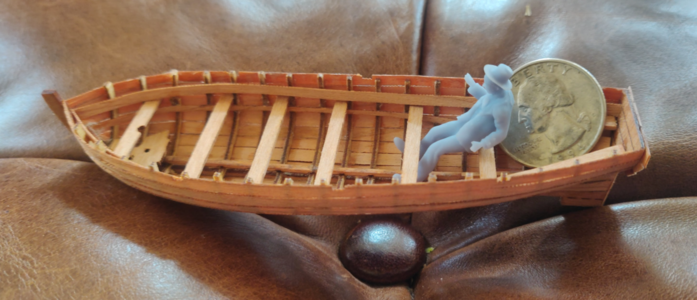
You can actually see some of the microdots between the planks on the lower right of the photo above. You can also see that I didn't sand the chaf off on the inside of the frames... wish I had done that now. You guys will at least know better. It didn't look too bad though and perhaps it will even look desirable at the end.
I received my CAF model recently and like others, was missing E1/E2. Seeing as I had to wait for these to arrive as well as the Ancre monograph, I thought I would start with the smaller boat, some barrels and creates from the associated kits. At the very least, I hoped to get a little bit of familiarity with the CAF pieces.
First impressions - the frames for the boat are very fragile! #2 broke in half while sanding. I thought that the jig would help to reposition this properly but it ended up going down too low on the keel. No way to tell this while it's in the jig.

The tolerances are very tight. While trying to pop the completed frame out of the jig, two of the frames broke. Lesson for other builders - use some snips and carefully cut the jig away in pieces.

Another problem is that the instructions are really quite minimal. There's no indication of where to play the top plank on the frames. I didn't have the Ancre monograph either at this point so I just guessed. I got lucky and it ended up pretty close, but I ended up with a small (.5mm) gap between the keel and the garboard strake.
Another tip - I would gently sand the char off the frames prior to assembly. It's just too difficult once things have been glued in place.

The planks come pre-splined, which is pretty awesome. However... there are microdots on the edges which are nearly impossible to sand down due to the fragility of the planks. This wasn't evident to me until I had gotten a few done. I did my best but ended up with these tiny dots which could be seen when the boat is held up in front of a light.
Nevertheless, I was really pleased with the fact that there were almost no clinkers or gaps on the planks. Well done.

You can actually see some of the microdots between the planks on the lower right of the photo above. You can also see that I didn't sand the chaf off on the inside of the frames... wish I had done that now. You guys will at least know better. It didn't look too bad though and perhaps it will even look desirable at the end.
Last edited:



